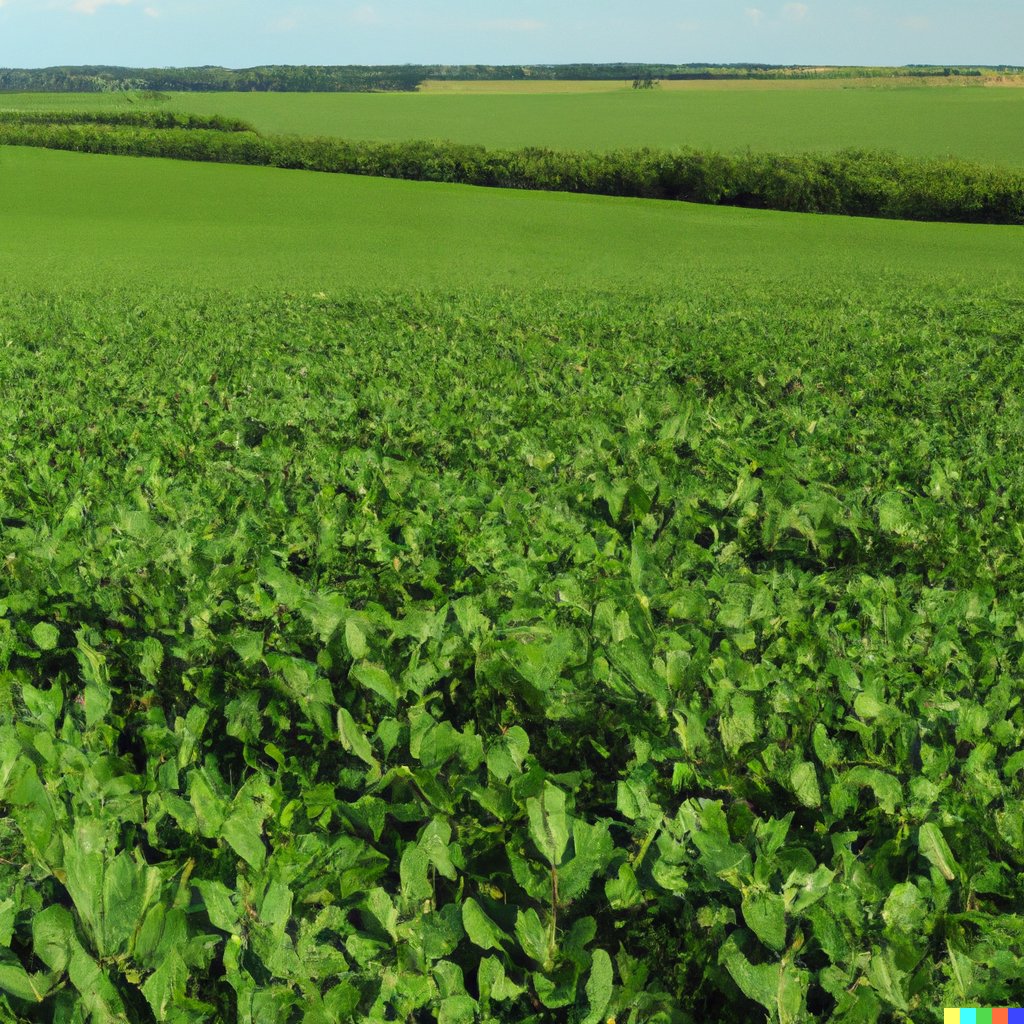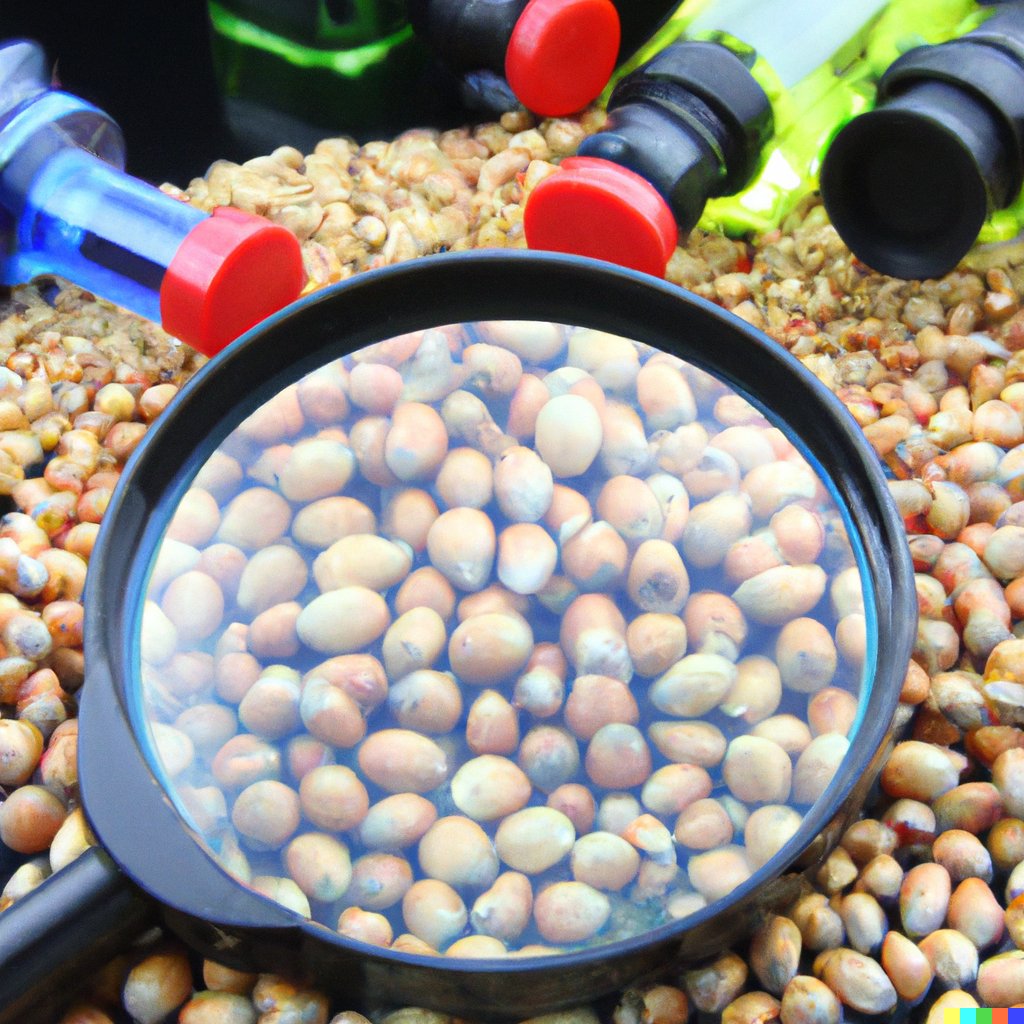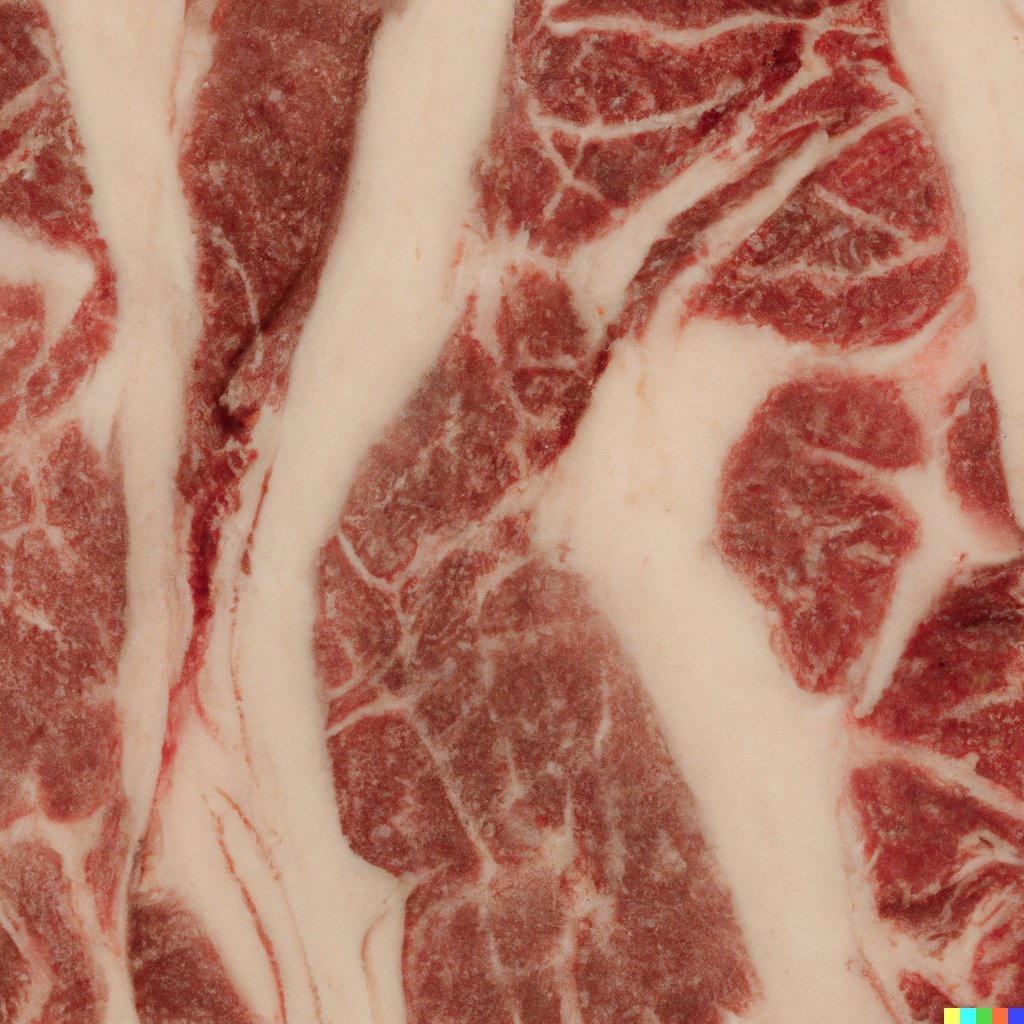
Are you concerned about the environmental impact of traditional fuel sources? Do you want to know more about sustainable options for fuel production? Look no further. In this article, we will delve into the absurdity of using soy as a source for bioethanol and explore alternative solutions. Get ready for a mind-boggling journey towards a greener future.
Food vs. Fuel Dilemma
The 'Food vs. Fuel Dilemma' is a major challenge due to the contradiction between using agricultural resources for food and biofuel production. Let's look at a table showing the effects of this dilemma on food security and fuel supply.
|
Column 1: Food Security |
Column 2: Fuel Supply |
|
Global population is rising |
Less dependency on fossil fuels |
|
Growing demand for food |
Lower greenhouse gas emissions |
|
Possible food shortages |
These factors create a difficult trade-off. Meeting energy needs could lead to price volatility and hurt vulnerable communities.
It's important to find solutions that fit both food security and renewable energy needs for a sustainable future. Let's research innovative approaches that can handle these issues and benefit both agriculture and energy. Planting soy to manufacture bioethanol is an impractical and destructive attempt.
Land Use Change and Deforestation
Soybean cultivation has serious repercussions - it leads to deforestation, biodiversity loss, and increased greenhouse gas emissions. This kind of environmental disruption puts ecosystems out of balance.
Alternative solutions must be explored to avoid the damaging effects of soybean-based bioethanol production. We should seek sustainable practices that prioritize the environment without sacrificing our energy needs. Now is the time to take action for a brighter future!
Instead of using a magnifying glass, why not set a field of soy on fire to roast marshmallows?
Intensive Farming Practices
Soybean Monocultures: Growing vast areas only with soybeans is a common intensive farming practice. But, this poses risks like loss of biodiversity and disease outbreaks.
Pesticide Use: To fight pests and increase crop yields, intensive farming uses high levels of pesticides. This harms ecosystems, like the decline of pollinators and beneficial insects.
Fertilizer Overuse: Intensive use of chemical fertilizers boosts crop growth. Yet, too much nitrogen and phosphorus runoff causes water eutrophication, with algal blooms and disrupted aquatic ecosystems.
These intensive farming practices ignore essential ecological principles for sustainable agriculture. They focus on maximizing production gains, ignoring long-term environmental effects that risk future food security.
It's estimated that 20-25% of global cropland is devoted to soybean production [source: FAO].
Using soy to make bioethanol won't solve the massive problem. It's a tiny, ineffective solution.
Carbon Emissions in Bioethanol Production
Carbon Footprint in Bioethanol Production?
Bioethanol production process emits tons of carbon. It's part of the renewable fuel debate. Here's a quick summary of carbon emissions in bioethanol production:
- Feedstock Cultivation: 35-200 gCO2eq/MJ
- Harvesting and Transport: 5-30 gCO2eq/MJ
- Processing and Fermentation: 10-25 gCO2eq/MJ
- Distillation: 5-15 gCO2eq/MJ
- Dehydration: 1-5 gCO2eq/MJ
Plus, energy-intensive cultivation practices and transportation carbon footprint must be considered for an accurate environmental benefits assessment. The International Energy Agency (IEA) studied this - they said direct emissions aren't enough. Life cycle analysis should include indirect ones related to land-use change.
Planting soy for bioethanol? Nah, better use play-dough to power a spaceship!
Land Use Competition
Crop Cultivation Clash! Land Use Competition is a situation where different crops fight for the same land. This clash appears due to overlapping areas of cultivation, causing difficulty in meeting both food and biofuel demands.
Let's look at some compelling data:
|
Crops for Food |
Crops for Bioethanol |
|
|
Land Area |
100,000 hectares |
50,000 hectares |
|
Yield |
10 tons/ha |
5 tons/ha |
|
Production |
1,000,000 tons |
250,000 tons |
In this agriculturally limited world, ethical farming questions and agricultural priorities arise. To meet global food needs without harming our environment, we must ask ourselves: Is growing soy for bioethanol really an effective solution?
Using crops like soy for bioethanol seems tempting as they are available and contain a lot of energy. However, we must remember that this puts pressure on the food supply chain. Ignoring this can lead to food scarcity and its negative effects.
It is essential that we consider the advantages and disadvantages of producing fuel and sustainable farming. This can help us make proper use of land and stop possible threats to global food safety. Let's work together to find solutions that balance renewable energy targets and keeping future generations fed. Growing soy to make bioethanol is like trying to fill an Olympic-sized swimming pool with a watering can - it's pointless!
Water Consumption in Soy Cultivation
Water Usage in Soybean Farming
Soybean farming needs a lot of water for irrigation. This affects local water resources and brings up water shortage issues. To fix this, it's important to know how much water the soybeans use. Here are the figures:
|
Year |
Water Consumption (liters) |
|
2016 |
700,000 |
|
2017 |
780,000 |
|
2018 |
820,000 |
These numbers show the growing water usage for soy cultivation. This big amount makes it clear we need sustainable practices to protect the environment.
In the past, soy was mostly grown for animal feed. Now, people also want to make bioethanol from soybeans. This has sparked worries about too much water being used. Growing soy for bioethanol is a crazy idea. It's like trying to power a rocket with a paper airplane.
Energy Return on Investment (EROI)
Energy Return on Investment (EROI) is a metric that measures the efficiency of energy production. It determines the ratio between the amount of useful energy extracted from a resource, and the energy used to procure it. EROI helps compare the sustainability of different renewable energy sources.
When analyzing EROI for biofuels, like soy-based bioethanol, more promising alternatives are apparent. Here is a comparison of various biofuel sources:
|
Biofuel Source |
EROI Value |
|
Soy-based bioethanol |
1.3 |
|
Corn-based ethanol |
1.5 |
|
Sugarcane ethanol |
8 |
|
Cellulosic ethanol |
10 |
Soy-based bioethanol has one of the lowest EROI values. This means that a small amount of energy is gained from the energy invested. In contrast, other biofuels such as sugarcane or cellulosic ethanol have significantly higher EROI values, making them more efficient and sustainable.
Considering its low EROI value, planting soy solely for bioethanol is not an optimal strategy. Allocating land, water, and other resources to produce inefficient biofuel is not ideal for achieving renewable energy goals. A more in-depth analysis should be conducted to find biofuel sources with better EROI values and higher overall efficiency.
In the past, as fossil fuel depletion became more of a concern, researchers turned to renewable energy sources, such as bioethanol. EROI was developed as an evaluation metric to assess the effectiveness of production methods. By studying the energy invested and gained, scientists and policymakers can make informed decisions and search for sustainable alternatives to create a greener future.
Looking for sustainable bioethanol alternatives? Maybe try harnessing the power of unicorn flatulence instead.
Sustainable Bioethanol Alternatives
Sustainable Alternatives to Produce Environmentally-Friendly Bioethanol:
Bioethanol, a renewable energy source used for transportation fuels, can be generated from various non-food feedstocks. These sustainable alternatives minimize environmental impact. Here is a list of them:
|
Sustainable Bioethanol Alternatives |
|
Agricultural Residues |
|
Algae Biofuel |
|
Cellulosic Materials |
Agricultural residues are byproducts of farming activities, like corn stalks or rice straw, which can be converted into bioethanol. Algae biofuel involves extracting oil from algae and converting it to bioethanol. Cellulosic materials like switchgrass or wood chips can also be utilized.
These alternatives offer benefits such as reducing reliance on food crops and greenhouse gas emissions. It is a step towards sustainable bioenergy production and environmental impact reduction.
Researchers have been exploring these alternatives due to the growing concern over the use of food crops, like soybeans, for bioethanol production. This shift is aimed at addressing environmental and socio-economic challenges associated with traditional biofuel production methods. Promoting crop diversity: To ensure a variety of crops are used in bioethanol production, beyond just corn and sugarcane.
Promoting Crop Diversity
Promote Agricultural Resilience!
Encourage ecological diversity and follow sustainable farming practices to achieve agricultural resilience. Here are 3 key points to consider:
|
Combat Monoculture Risks |
Enhance Climate Change Adaptation |
Support Ecosystem Health |
|
Diversifying crops can help protect against pests, diseases, or extreme weather events. Planting a variety of crops reduces the risks of monocultures. |
Different crops have different abilities to cope with temperature changes, droughts, and floods. Diversifying agricultural systems helps build resilience to climate change. |
Incorporating a variety of crops increases soil fertility and reduces the need for synthetic fertilizers and pesticides. Crop diversity contributes to improved ecosystem health and sustainability. |
Agricultural resilience is vital for future food security and to minimize the risks of relying on one or two crops.
Let's promote agricultural resilience by embracing diverse farming practices that prioritize ecological diversity, climate change adaptation, and sustainable food production – for our planet's future. Start diversifying crops and create a more resilient and sustainable world. Also, transition to cleaner energy sources – nothing says 'eco-friendly' like planting crops for fuel instead of food!
Transition to Cleaner Energy Sources
The world is increasingly focused on sustainable energy strategies. Alternative sources, such as solar, wind and hydroelectric power, are gaining prominence. It's becoming imperative to reduce reliance on fossil fuels for a greener future.
Sustainable strategies involve transitioning to renewable sources. This helps cut fossil fuel consumption and its environmental impact. Embracing cleaner energy sources brings us closer to a green and sustainable future.
Solar power has become accessible and cost-effective. Technology advancements are improving efficiency and lowering installation costs. Solar energy is a viable option for powering homes and businesses. Wind energy is a reliable source with low carbon emissions.
The transition to cleaner energy sources will be remembered in history books. Recognizing the consequences of fossil fuels, support for renewable alternatives grew. Advancing these technologies shapes our future towards a more sustainable world. Bioethanol, a renewable fuel, has a shady source - planting soy just to turn it into booze for cars! Sounds like a soy-tastic party!
Bioethanol as a Renewable Fuel: Why is bioethanol considered renewable, and what is its source?
Bioethanol: A Sustainable Fuel & Its Source
Bioethanol is a renewable fuel from organic matter like crops or residues. It's created through fermentation and distillation of plants, which can be continually replenished. Soybeans are a primary source, yet this raises several issues. Forests can be cleared for soybean cultivation. Plus, carbon emissions and greenhouse gases are released.
Conflicts occur between food and energy production when using the land. Soybean growth requires water, putting strain on resources. Additionally, soy-based bioethanol does not have the best energy return on investment.
Therefore, to achieve sustainability, other sources should be explored. Diversifying crops creates greener energy with low carbon emissions and less reliance on fossil fuels. Crop diversity is essential for a sustainable future.
It's time to make wise choices for now and generations to come! Let's embrace alternatives to soy-based bioethanol and promote sustainable practices. This will help us create an eco-friendly world.
What is the absurdity of planting soy to make bioethanol?
The absurdity of planting soy to make bioethanol lies in the fact that it is an inefficient and unsustainable use of resources. Soy crops require large amounts of land, water, and energy to grow, and the bioethanol produced from soy is not a viable long-term solution for energy production.
Why is it considered inefficient to plant soy for bioethanol?
Planting soy for bioethanol is inefficient because the amount of energy required to grow, harvest, and process soy into bioethanol is greater than the amount of energy produced. This makes it an unsustainable and wasteful use of resources.
What are the implications of planting soy for bioethanol?
The implications of planting soy for bioethanol include deforestation, water scarcity, and food insecurity. Large-scale soy cultivation can lead to the destruction of natural habitats, depletion of water sources, and competition for land with food crops, thereby contributing to global issues of climate change and food shortage.
Are there any alternative solutions to using soy for bioethanol?
Yes, there are alternative and more sustainable solutions for bioethanol production, such as using non-food crops like switchgrass or algae, or investing in renewable energy sources like solar or wind power. These alternatives have a lower environmental impact and are more efficient in producing energy.
What are the economic implications of planting soy for bioethanol?
The economic implications of planting soy for bioethanol include increased costs for food production, higher food prices, and potential loss of income for farmers. This can also lead to a domino effect on other industries, such as meat and dairy production, as soy is a major feed crop for livestock.
How can individuals contribute to reducing the absurdity of planting soy for bioethanol?
Individuals can reduce the demand for bioethanol from soy by choosing alternative and sustainable energy sources, supporting environmentally-friendly farming practices, and advocating for policies that promote responsible land use and energy production. It is also important to educate ourselves and others about the issue and make informed choices as consumers.
Conclusion:
The use of soybeans for bioethanol production presents numerous environmental and ethical concerns, highlighting the absurdity of this approach in the quest for renewable energy. The food vs. fuel dilemma, deforestation, intensive farming practices, carbon emissions, land use competition, and water consumption are all critical issues that need addressing. More sustainable alternatives to soy-based bioethanol exist and should be explored to minimize ecological impacts and ensure a balanced approach to energy production. Promoting crop diversity and transitioning to cleaner energy sources are essential steps in creating a more sustainable and environmentally conscious future. The focus should be on developing biofuel sources that do not compromise food security or contribute to environmental degradation.













